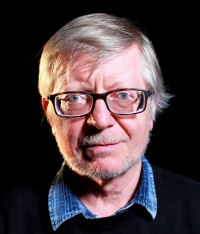I am still proud that my exhibition was not cancelled by the Minister of Culture, but by the Minister of Agriculture

Stáhnout obrázek
Ladislav Čarný, an academic painter, was born in Žilina and graduated from the Academy of Fine Arts and Design in 1974. Until 1992 he taught at the Elementary Art School, he is also the author of methodologies for art education. Since 1992 he has been a professor at the Academy of Fine Arts and Design at the Department of Theory and History of Art. He belongs to the group of artists Avance Retard. During socialism, he was not allowed to exhibit his works at all. In 1987 he became a signatory of the Declaration on the Deportations of Jews from Slovakia. During the Velvet Revolution in November 1989, he joined the civil and protest activities of VPN.
